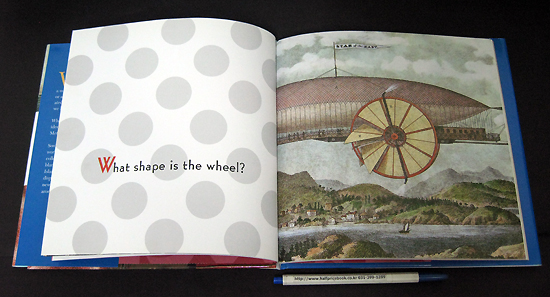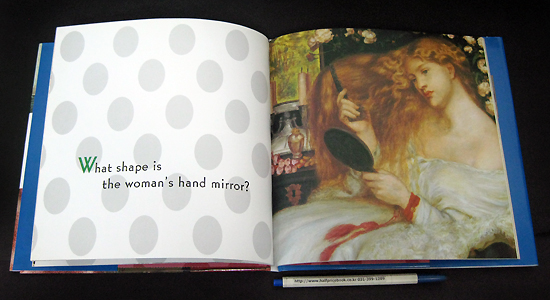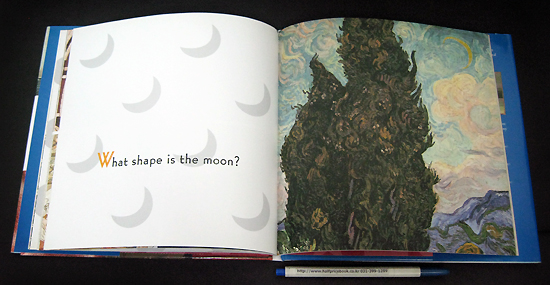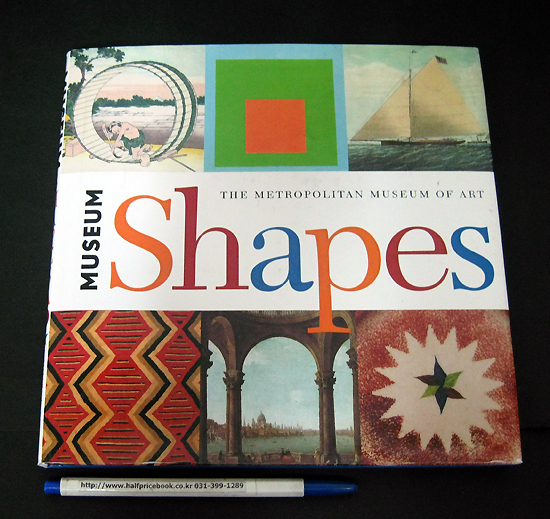|
|
|
|
 |
 이전 | 이전 |  목록 | 다음 목록 | 다음 |
|
확대 이미지 : 상세보기1

|
확대 이미지 : 상세보기2

|
확대 이미지 : 상세보기3

|
확대 이미지 : 상세보기4

|
[ 책 소개 ]
아이들이 세계적인 화가들의 명화들을 감상하면서, 도형의 기본 개념도 익힐 수 있는 책입니다. 메트로폴리탄 미술 박물관에서 편찬한 책으로 다른 시대, 다른 화풍의 다양한 화가들의 그림을 감상할 수 있습니다.
명화 속에 그려져 있는 도형을 찾아낸 후, 페이지를 넘기면 같은 도형이 그려진 4컷의 명화 그림을 함께 보여줍니다.
정사각형, 원, 직사각형, 삼각형, 타원형, 아치형, 초승달 모양, 다이아몬드, 하트, 별 등 다양한 도형들이 그림 속에서 어떻게 그려져 있는지를 배우고 명화도 감상할 수 있습니다.
책 말미에는 본문에서 나왔던 모든 명화들의 제목, 화가, 그림의 기법, 그림의 크기, 그림이 그려진 년도, 소유주 등 자세한 정보들이 실려있습니다.
오래도록 보관하실 수 있는 튼튼한 하드커버입니다.
[ 서지 정보 ]
Edition: Hardcover: 48 pages
ISBN-10: 0316056987
ISBN-13: 978-0316056984
책 크기 : 22.4cm x 22.4cm
[ 영문 서평 ]
Book Description
From circles and squares to arches and stars, Museum Shapes introduces children to basic and complex shapes through The Metropolitan Museum+s extensive and varied collections of art. Each shape has two spreads devoted to it; the first spread asks what shape a certain object is in a chosen piece of art. Once the child has the answer, he or she can turn the page to verify the answer. Information about each piece of art and its creator appears in the back of the book. While children discover different shapes, adults will appreciate the aesthetic value and cultural richness of this glorious book, which features the works of a diverse range of artists including Paul Klee, Pablo Picasso, Claude Monet, and Dante Gabriel Rossetti.
School Library Journal
Another beautiful concept book that highlights works from the museum's collection. With a structure similar to that in Museum 123 (Little, Brown, 2004), a question (e.g., What shape is the wheel?) faces a full-page art reproduction. On the next spread, details from four more works of art that include the shape face a single example of it on a white background, centered and clearly labeled. The concept is simple; what makes this book so wonderful is the art, which is varied in content, style, medium, culture, and period, and is beautifully reproduced. Young children may be challenged to name the arch or the crescent, for example, and may also have some difficulty finding familiar forms in a few paintings, like the rectangles in Childe Hassam's waving flags in Avenue of the Allies, Great Britain, 1918. Parents will relish the opportunity to look at these wonderful works of art and to discuss not only the shapes, but also the content of the pictures with their children. A title to be shared again and again.
From Booklist
An exercise in both art appreciation and recognizing shapes, this book invites children to find one of 10 geometric forms in tiled details taken from several dozen artworks owned by New York's Metropolitan Museum of Art. The text follows a very basic pattern, asking, "What shape is . . ." a particular object in a painting, with the answer on the next page, accompanied by several other examples of the shape. The example for Arch, a rock formation in a painting by Monet, may be a bit too impressionistic for the target audience, but, in general, the shapes--square, rectangle, crescent, heart, etc.--are clear and easy to pick out. All the art is fully identified in a visual key at the end. Being smaller and more subdued in color than Lucy Micklethwait's I Spy Shapes in Art (2004), this doesn't have the same visual impact; it does, however, include more works, and makes an equally eye-opening prelude to an art-museum visit.
|
| * 작가의 다른 작품(1) |
I - Heart
I
Heart |
| * 최근 이 작품을 구입하신 분들의 다른 선택 |
Jacob's Eye Patch
하드커버, 슈퍼바이 |
Splat the Cat: The Name of the Game
An I Can Read Book, 1단계 |
Brain Quest Grade 1
카드책, 슈퍼바이 |
Jonathan Livingston Seagull
페이퍼백, 슈퍼바이 |
|
| |
|
|